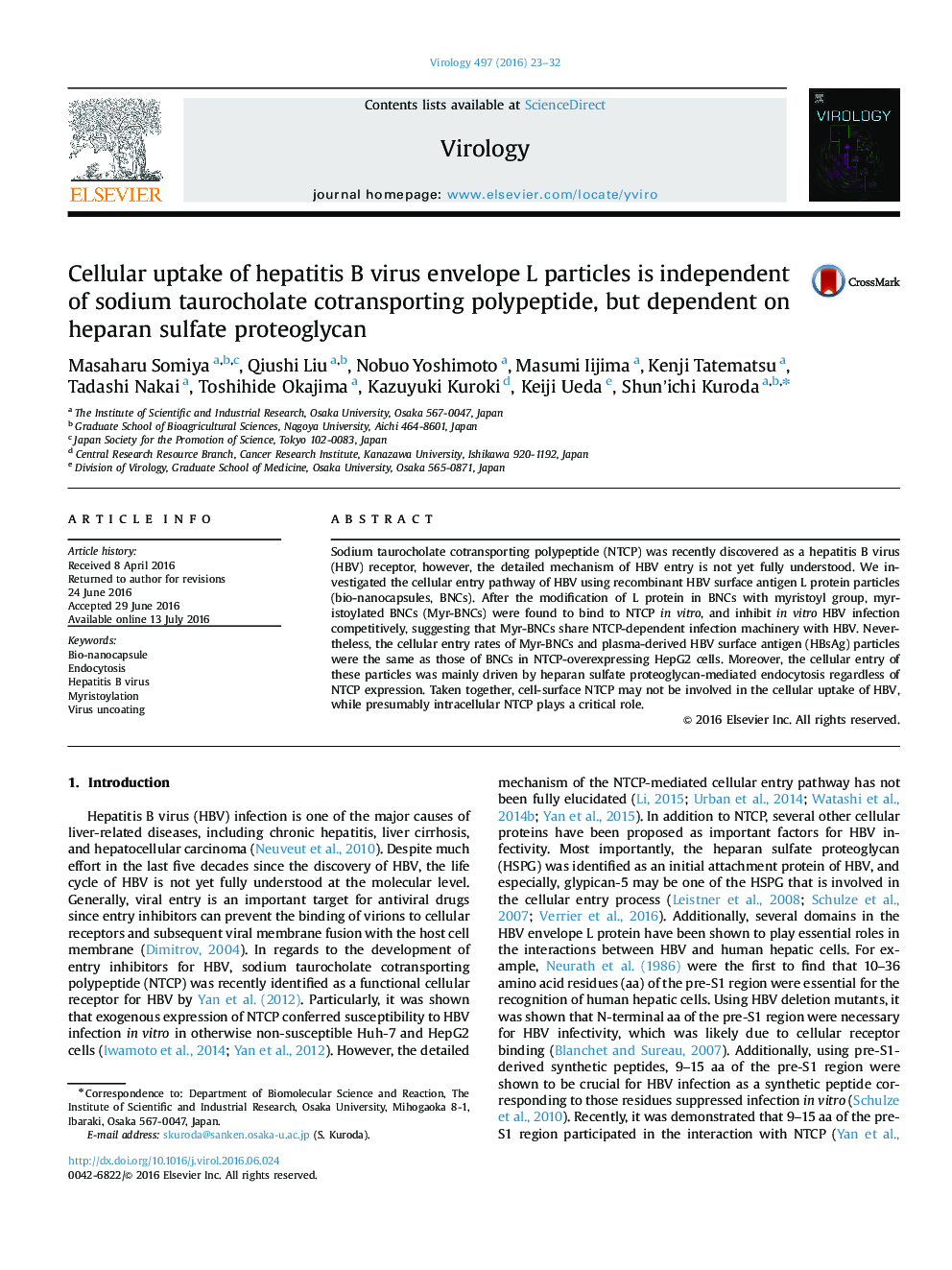| کد مقاله | کد نشریه | سال انتشار | مقاله انگلیسی | نسخه تمام متن |
|---|---|---|---|---|
| 6138620 | 1594220 | 2016 | 10 صفحه PDF | دانلود رایگان |

- Entry of hepatitis B virus (HBV) was examined using recombinant HBV particles.
- Recombinant HBV particles utilize HSPG as entry receptor.
- Functional HBV receptor, NTCP, might work in endosome/lysosome.
- Our findings propose novel entry mechanism of HBV.
Sodium taurocholate cotransporting polypeptide (NTCP) was recently discovered as a hepatitis B virus (HBV) receptor, however, the detailed mechanism of HBV entry is not yet fully understood. We investigated the cellular entry pathway of HBV using recombinant HBV surface antigen L protein particles (bio-nanocapsules, BNCs). After the modification of L protein in BNCs with myristoyl group, myristoylated BNCs (Myr-BNCs) were found to bind to NTCP in vitro, and inhibit in vitro HBV infection competitively, suggesting that Myr-BNCs share NTCP-dependent infection machinery with HBV. Nevertheless, the cellular entry rates of Myr-BNCs and plasma-derived HBV surface antigen (HBsAg) particles were the same as those of BNCs in NTCP-overexpressing HepG2 cells. Moreover, the cellular entry of these particles was mainly driven by heparan sulfate proteoglycan-mediated endocytosis regardless of NTCP expression. Taken together, cell-surface NTCP may not be involved in the cellular uptake of HBV, while presumably intracellular NTCP plays a critical role.
222
Journal: Virology - Volume 497, October 2016, Pages 23-32